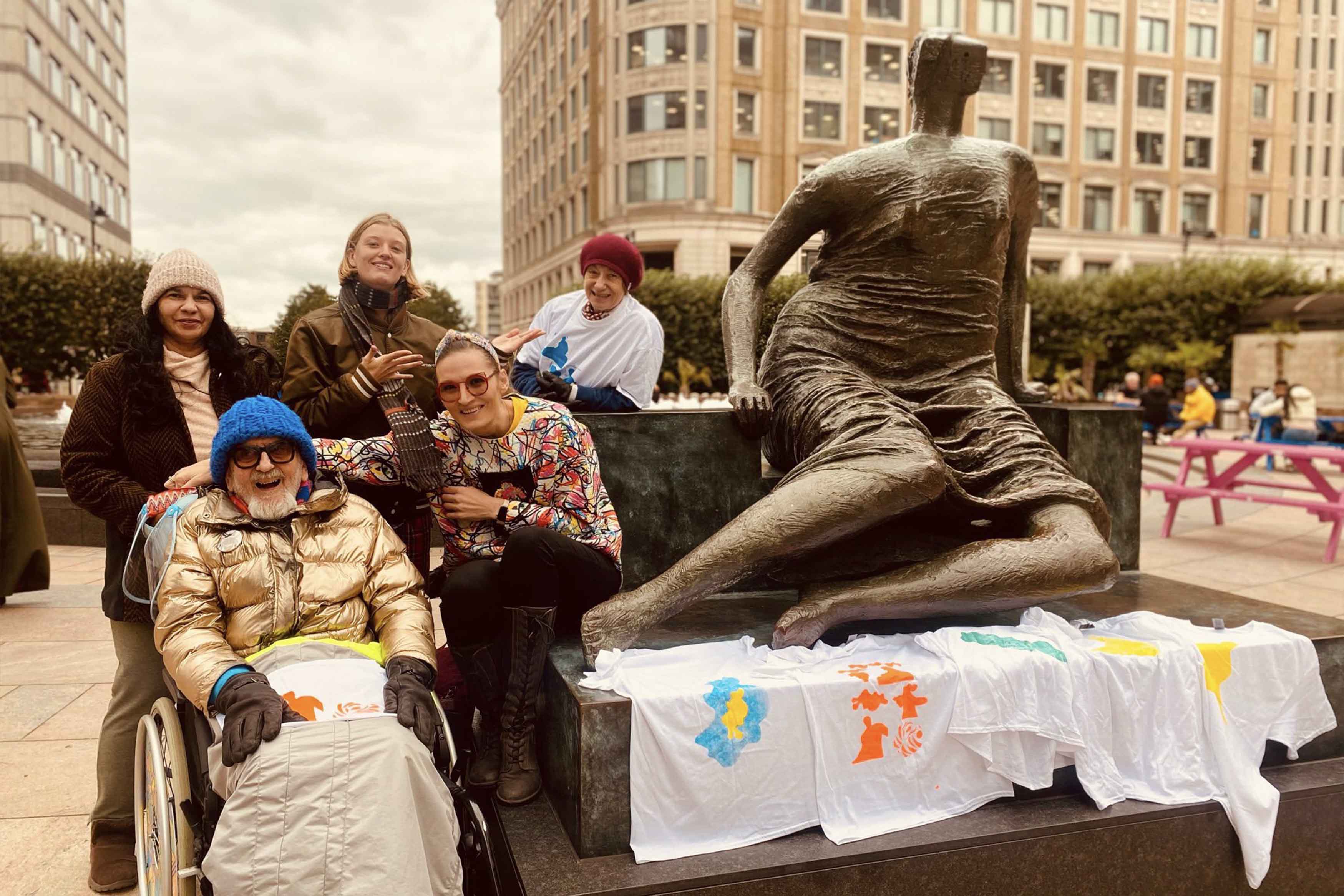Public Engagement

Information
- What
- A one-off or a series of creative workshops which look to achieve social cohesion by giving a local community access to a creative process.
- Who
- Residents who all live in a specific to a town or borough.
- When
- We’ll find a time that suits you.
- How
- These are in-person and run in a community space local to the residents participating.
- Price
- These workshops are free for participants. They are often funded by local councils, or co-funded by ourselves. However if you are interested in funding a project, you can donate or get in contact directly.

“
We learnt how ‘Old Flo’ is intrinsically linked to the East End community spirit of resilience” David, Participant of Discovering ‘Old Flo’
Methodology
- Format
- The construction of these workshops is tailored to the opportunity we are trying to provide. Barriers can stifle creativity in a community, therefore we develop a format that overcomes these by listening to those involved, and developing feasible solutions for making the workshops happen.
- Hopes
- Successful programmes provide a free opportunity to members of the community who have difficulty accessing creative participation. We want participants to go away with new skills and inspiration to continue being creative beyond our workshops.
Case Study
Discovering ‘Old Flo’

This series of five workshops, was funded by Canary Wharf Group to allow people living with dementia or cognitive impairment, to enjoy and explore Henry Moore’s Draped Seated Woman, affectionately known as ‘Old Flo’


Week 1 – Getting to know ‘Old Flo’
Following some contextual information about the history of Old Flo, the group used their imaginations to explore which characteristics the sculpture would embody if it was alive. With the knowledge of why she was brought to London, they co-decided Old Flo would be a community-minded person, who enjoys socialising and in turn is much loved by the people around her. This narrative building exercise was proceeded by drawing the sculpture from photographs. Each participant focused on a different element of the sculpture, some depicting the whole form, while others focusing on texture, and some even choosing to dissect the sculpture into something more abstract.

Week 2 – Visualising ‘Old Flo’
The participants were noticeably more comfortable with expressing themselves this week and after a period continuing with their drawings, they were ready to think more boldly about the shapes they were creating. Part of this process meant understanding which were the most important shapes for conveying the aspect of Old Flo they were most interested in capturing. This new perspective of mark-making resulted in a series of stencils. Stencils are an important component of screen printing which the participants would using the following week. In order to test the effectiveness of these, each person used a sponge and colour ink of their choice, to create multiple positive editions of their stencils onto sheets of paper.


Week 3 – Introducing screen printing
Week one was about getting to know the sculpture. Following some contextual information about the history of Old Flo, the group used their imaginations to explore which characteristics the sculpture would embody if it was alive. With the knowledge of why she was brought to London, they co-decided Old Flo would be a community-minded person, who enjoys socialising and in turn is much loved by the people around her. This narrative building exercise was proceeded by drawing the sculpture from photographs. Each participant focused on a different element of the sculpture, some depicting the whole form, while others focusing on texture, and some even choosing to dissect the sculpture into something more abstract.


Week 4 – Screen printing ‘Old Flo’
Off the back of an enjoyable previous week screen printing, the participants printed further editions of their items. We also explored new techniques, such as printing a second colour and masking off areas of a stencil to create level of customisations to the prints. As well as printing their own designs, participants printed compositions using other people’s designs, symbolising the shared process of the workshops. By the end of the workshop, everyone had tote bags, tea-towels and t-shirts to take away with them. Because of the usability of these items, rather than simply being pieces of fine art, they acted as a more purposeful memento, proving value as gifts or talking points to share with friends and family.

Week 5 – Visiting ‘Old Flo’
This was the first time the group were together beyond the usual space for meeting at Toynebee Hall. This week we met at Old Flo herself on Cabot Square in Canary Wharf. It was a great chance to get a 360 degree view of the sculpture and we brought the conversation full circle by again discussing what people thought Old Flo would be like if she were alive. The group compared their screen printed designs to the physical sculpture and displayed them on the plinth she sits on, for passers by to see. Following that we headed to Canary Wharf Groups’ (CWG) HQ at Canada One to meet the project’s commisioners and to discuss the sculpture in a bit more depth over tea and brownies.





